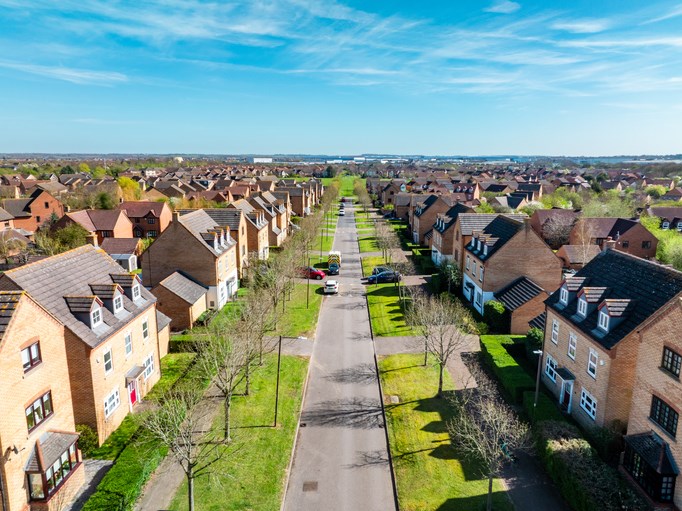RTPI response to DLUHC consultation on the Building Safety Levy
October 2021
About the RTPI
The Royal Town Planning Institute (RTPI) champions the power of planning in creating sustainable, prosperous places and vibrant communities. As a learned society, we use our expertise and research to bring evidence and thought leadership to shape planning policies and thinking. As a professional body, we have over 25,000 members across all sectors, and are responsible for setting formal standards for planning practice and education.
This is the RTPI’s response to the Department for Levelling Up, Housing and Communities (DLUHC) consultation on the Building Safety Levy. This consultation seeks views on the design and calculation of the proposed building safety levy. Through the levy, developers will make a contribution to remedy historical building safety defects. It covers the following areas: design of the levy, levy calculation, potential housing supply impacts, process and timings, incentives and sanctions and reviews and appeals.
Read the RTPI's full response below or download it in PDF here.
General comments
Impact on housing supply: We note that the levy could have significant impact on development costs with it being implemented through CIL regs. The consultation notes that “When setting levy rates, we will consider the cumulative impact on development viability of the new Infrastructure Levy, the Building Safety Levy and other prospective costs to the sector”. The rate must be considered alongside other costs, such as build cost inflation and increasing costs, as well as other taxes such as the Residential Property Developer Tax (RPDT) and Corporation Tax.
Already in many areas there is competition for adequate funds through CIL and S106 such that not all infrastructure or policy compliant affordable housing provision can be afforded. We recommend that the Government works to minimise any negative impacts on housing delivery caused by introducing a Building Levy alongside other costs.
Scope: We recommend that to avoid market distortion and raise an appropriate amount of revenue, the scope of the levy should be set suitably wide and cover all providers of taller buildings except for affordable housing and hospitals.
Transition: The Government intends to bring the Levy forward as part of Gateway Two, which is set to be introduced in April 2023. Many of these developments will be built on land that has been costed and bought and a new charge will reduce viability and may lead to renegotiations on S106 contributions and/or changes to the design/layout of the development. Government should, therefore, carefully consider introducing transition arrangements to allow the industry to incorporate any new costs into the early stages of the development process.
Design of the Building Safety Levy
Who will need to pay the levy?
Q1: Do you agree that the Client should be responsible for paying, or ensuring payment of, the levy?
Please let us know of any alternative proposals you consider to be better, and why, or any other factors we should take into account.
Yes, this appears sensible provided the impact on development viability is adequately considered.
Exclusions from the levy
Affordable housing
Q2: Do you agree that affordable housing should be excluded from levy charges? Please explain.
Yes.
Hospitals
Q3: Do you agree that hospitals should be excluded from paying the levy?
Yes.
Q4: Are there any other categories of development or developer that should be excluded from the levy? Please explain why you think this and your views on market impacts.
No answer proposed for this question.
Small and Medium-sized Enterprises
Q5: Would the ability to agree payment schedules support SMEs?
No answer proposed for this question.
Q6: Are there other measures that would support SMEs paying the levy?
No answer proposed for this question.
Refurbishment
Q7: Do you agree that refurbishments should be excluded from the levy? Are there any types of refurbishments that you consider should be captured and should pay the levy?
No answer proposed for this question.
Levy calculation
Q8: Which option do you think provides the most transparent, simple and objective basis for the levy: floor area or per residential unit? Why?
A charge by residential unit, in a similar way to a building control charge, S106 or CIL payment, would appear the most straightforward. However, developers take a variety of approaches when designing a new development and two developments with the same floor area may have very different numbers of homes within them. It could, therefore, be more equitable to charge by floor area, with communal spaces/affordable rented homes excluded from the calculation.
This approach would also create a level playing field with other forms of commercial development where a per-unit calculation would not be appropriate.
An unintended consequence of a per-unit levy could be that developers reduce the number of smaller, more affordable homes within a development and focus on larger, higher value properties.
Q9: Would documentation required for building control approval at Gateway 2 provide accurate evidence of this basis?
No answer proposed for this question.
Q10: Do you have an alternative proposal as a basis for the levy? If so, please explain why you consider it better.
A ‘per building’ approach could be considered because, based upon an appropriate headline cost, and with the rate defined by geographic location. This could be simple and clear for providers, easy to apply for Local Planning Authorities (LPAs), and provide more certainty over the revenue raising potential of the Levy.
Q11: Do you agree that the levy rate should be varied depending on location, to reflect differing property values? Please indicate any suitable examples of doing so.
Yes. A high, flat rate could have a disproportionate impact on lower value sites.
Potential housing supply impacts
Q12: In seeking to balance revenue generation from the levy and impacts on housing supply, we would welcome views on the levy rate (as a percentage of property value) which would impact viability of housing supply – differentiating between different geographical locations and also property values if possible.
No answer proposed for this question.
Q13: How might developers seek to mitigate the impacts of a levy – including adjusting development plans, build out strategy, land acquisition strategy and pricing?
Ultimately residential developers may decide not to pursue this kind of development if the rate is set too high, when considered alongside the other taxes, charges and costs. It is therefore important that government looks carefully at this cumulative impact.
If the Levy was not applied across all types of construction above 18m developers would be less competitive in the land market, potentially encouraging landowners to either hold on to land or seek to maximise profitability through sale to non-residential developers.
For developments where the land has been purchased but has not yet reached ‘Gateway Two’, the Levy will have a disproportionate impact.
Q14: Is there anything further the government might want to consider in relation to the design of the levy which would help minimise the impact on housing supply?
Scope: To limit the impact of the levy on supply, to avoid market distortion and to raise an appropriate amount of revenue, the scope of the levy should be set suitably wide and cover all providers of taller buildings.
Rate: The rate must be considered alongside other costs, such as build cost inflation and increasing costs, as well as other taxes such as the Residential Property Developer Tax (RPDT) and Corporation Tax. Ultimately, developers require certainty and absolute clarity at the land acquisition stage as to the Levy liability.
Transition: Government intends to bring the Levy forward as part of Gateway Two, which is set to be introduced in April 2023. Many of these developments will be built on land that has been costed and bought and a new charge will reduce viability and may lead to renegotiations on S106 contributions and/or changes to the design/layout of the development. Government should, therefore, carefully consider introducing transition arrangements to allow the industry to incorporate any new costs into the early stages of the development process.
Impact: Although the consultation estimates that the levy will be limited to 200 buildings a year, or some 15,000 homes, the impact is likely to be geographically concentrated in the short term – in major cities such as London – and on smaller homes, such as one and two-bedroom apartments which tend to be favoured by first time buyers.
If this Levy is for a specific purpose and revenue-raising target, like the Residential Property Developer Tax, its application should be time-limited or revenue-limited. Government may want to consider a tapering approach on the charge to avoid a cliff-edge as the Levy nears its revenue target.
Q15: Do you consider that the levy would have any impacts on local regeneration schemes? At what rate (as a percentage of market property value) would that impact be seen?
No answer proposed for this question.
Process and timings
Q16: Do you anticipate any issues with a self-assessment and payment system alongside the Gateway approvals process, and how might these be addressed?
No answer proposed for this question.
Q17: How might a payment schedule system be implemented?
No answer proposed for this question.
Incentives and sanctions
Q18: Do you anticipate that these, or other issues, may occur in operation of the levy? Please provide examples.
No answer proposed for this question.
Q19: How might levy design avoid mistakes, gaming and fraud, or else maximise positive incentives?
No answer proposed for this question.
Reviews and appeals
Q20: In what circumstances do you think penalties or surcharges would be necessary, and how might these be applied? Please provide examples.
No answer proposed for this question.
Q21: Are there any other issues that could give rise to disputes in relation to the levy?
No answer proposed for this question.
Appeal to the First Tier Tribunal
Q22: Do you agree that the approach to resolving disputes outlined in paragraphs 67 to 69 is appropriate? Are there other decisions in the operation of the levy that you consider merit a review and appeal route, and why?
No answer proposed for this question.



